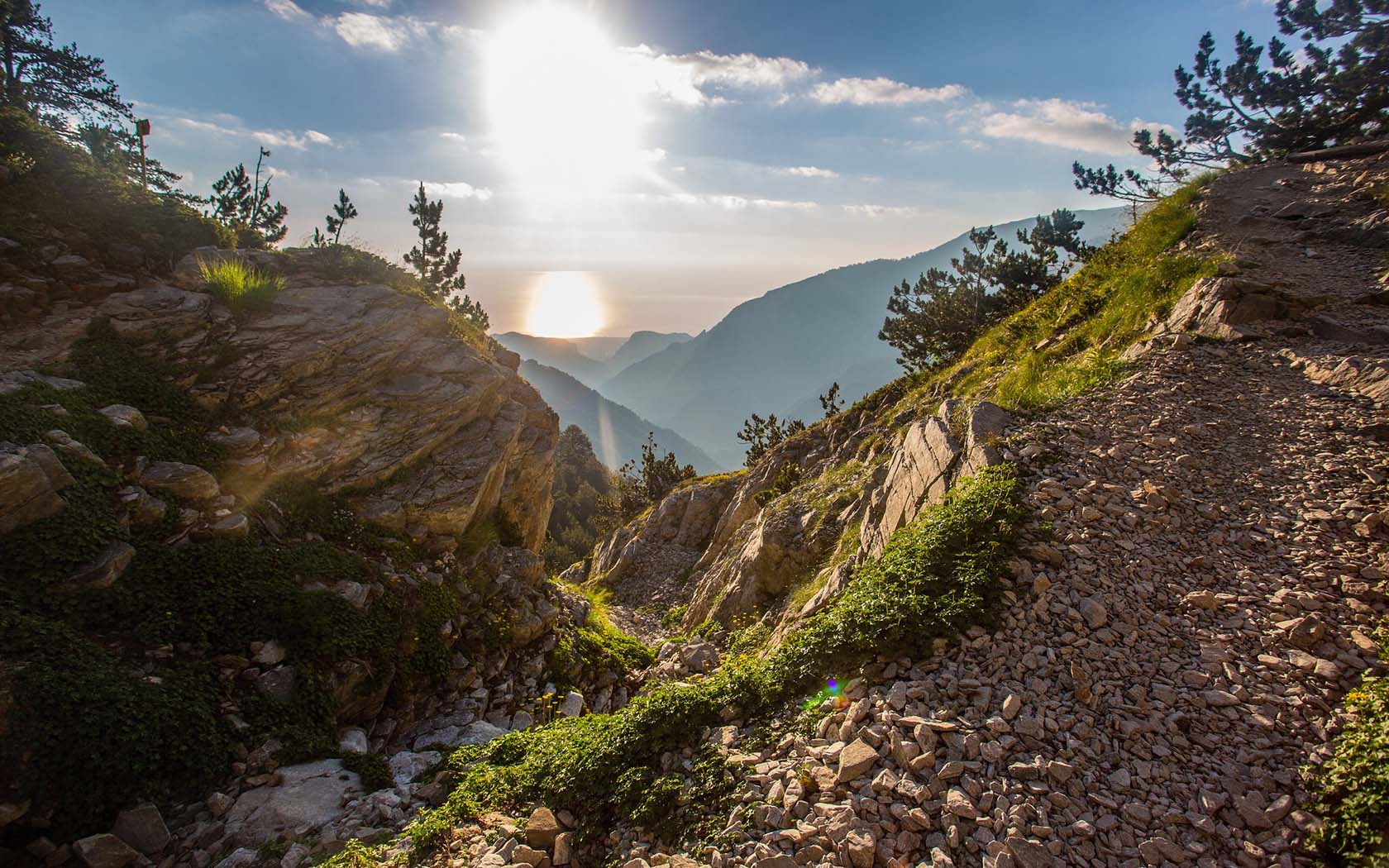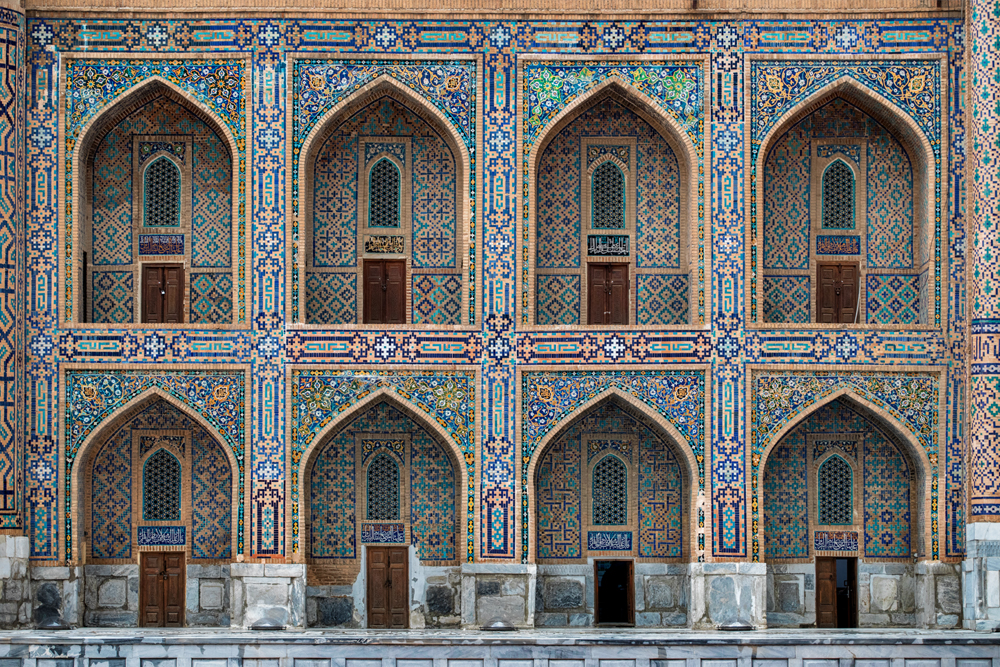The Hiker’s Guide To Conquering Greece’s Mount Olympus

On a clear day, the peak of Mount Olympus can be seen towering above the small village of Litochoro, around 400km north of Athens. At 2917m high, it’s Greece’s highest mountain and the subject of enthralling myths and equally stunning views across the Olympus Range.
Legend has it that, thousands of years ago Zeus, the god of the sky and thunder, sat on his throne atop the mountain while the 11 other Olympic gods came together on the tallest point, Mytikas, to watch over the mortals below.
Today, more than 10,000 adventure-seekers lace up their hiking boots each year to take on the so-called “playground of the gods”. It’s not hard to see why they’re drawn to it. The lower trails weave through forests, across wooden-bridged river crossings, and up rocks leading to majestic views. With Greek mythology tied to almost every step, it’s not just a hike, it’s a mystical adventure worthy of every hiker’s bucket list.
From logistics and finding the right mountain guide to transport and knowing what gear you’ll need, organising a trip like this can be daunting. Here are our tips for conquering one of Europe’s most magical mountains.
[related_articles]50635[/related_articles]When To Hike
Ascending in winter is notoriously more challenging than doing so in summer. Snow usually starts to fall on the peaks in late October and hangs around until June, bringing with them the risk of avalanches. The warmer months are popular as conditions aren’t too testing and temperatures are still relatively cool.

Whatever time of year you choose, make sure to invest in the right gear. You’ll likely need a down jacket, thermals, waterproof clothing and hiking poles. One thing you’ll definitely need is a sturdy, worn-in pair of hiking boots.
Before You Go
Adventure tour companies like World Expeditions specialise in planning the entire trip for you. It’s a good option for groups and less-experienced hikers as they work with local guides who take care of everything from planning the route and booking accommodation to organising meals and water. Best of all, they know all the most picturesque photo spots.
You’ll need to arrange your own mountaineering insurance, just in case.
There are a few peaks to choose to summit. Mytikas is the most popular at almost 3000m. Others opt for Skolio, which involves a tad less rock scrambling and rogue rock falls.

It’s a challenging two-to-three-day trek to the summit of either peak and back to base, so don’t skimp out on the training. Get outside for regular hikes in the months beforehand or schedule some strength and cardio gym sessions. Whatever works for you, keep it up – you’ll thank yourself when you’re scrambling up rocks and walking for hours at a time.
Most hotels in Litchoro, the small, picturesque town at the foot of the Olympus Range, store luggage during your hike so you can lighten the load with a change of clothes and essentials in a daypack.
Sleeping And Eating
Refuges are your go-to when it comes to sleeping on the mountain. They sport dormitory-style beds (do yourself a favour and pack ear buds to avoid being kept awake by the inevitable snorer in your group), water and electricity. They also take care of cooking delicious, hot meals.
It’s essential you book ahead as they tend to be few and far between.
Getting There
Litchoro is the most popular starting point. It’s 100km from the nearest international airport in Thessaloniki, so most hikers opt to travel here via the train or private transfer.
Start hiking from Litchoro or take a taxi to the Prionia trailhead for around $35. It’s the main entry to the range and, from here, it takes approximately 3.5 hours to reach Refuge A.

On your second day, take your time to gawk at the countless incredible valleys and plateaus and marvel as the landscape transforms from lush, green forest to rocky barrenness as you climb higher into the clouds.
The Summit
The summit morning is when the mountain’s ethereal quality really shows. Wake up early, rug up and watch the rising sun paint the towering shale rocks in a golden glow.

This part of the hike starts along a narrow path and ends with hand and footholds on sharp rock as you slowly scale up the menacing peak of Mytikas. The weather can turn in moments so, some days, the sun disappears in moments, replaced by a thick fog and poor visibility. Helmets are essential to protect against any rocks dislodged by hikers above.
After about 45 minutes of rock scrambling, you’ll arrive at the summit. Sign the visitor’s book and soak up the breathtakingly beautiful views across rolling green gorges, all the way to Thessaloniki and the blue Agean Sea.
(Lead image: BRIEF / Flickr)
[qantas_widget code=SKG]Check out Qantas flights to Thessaloniki.[/qantas_widget]







